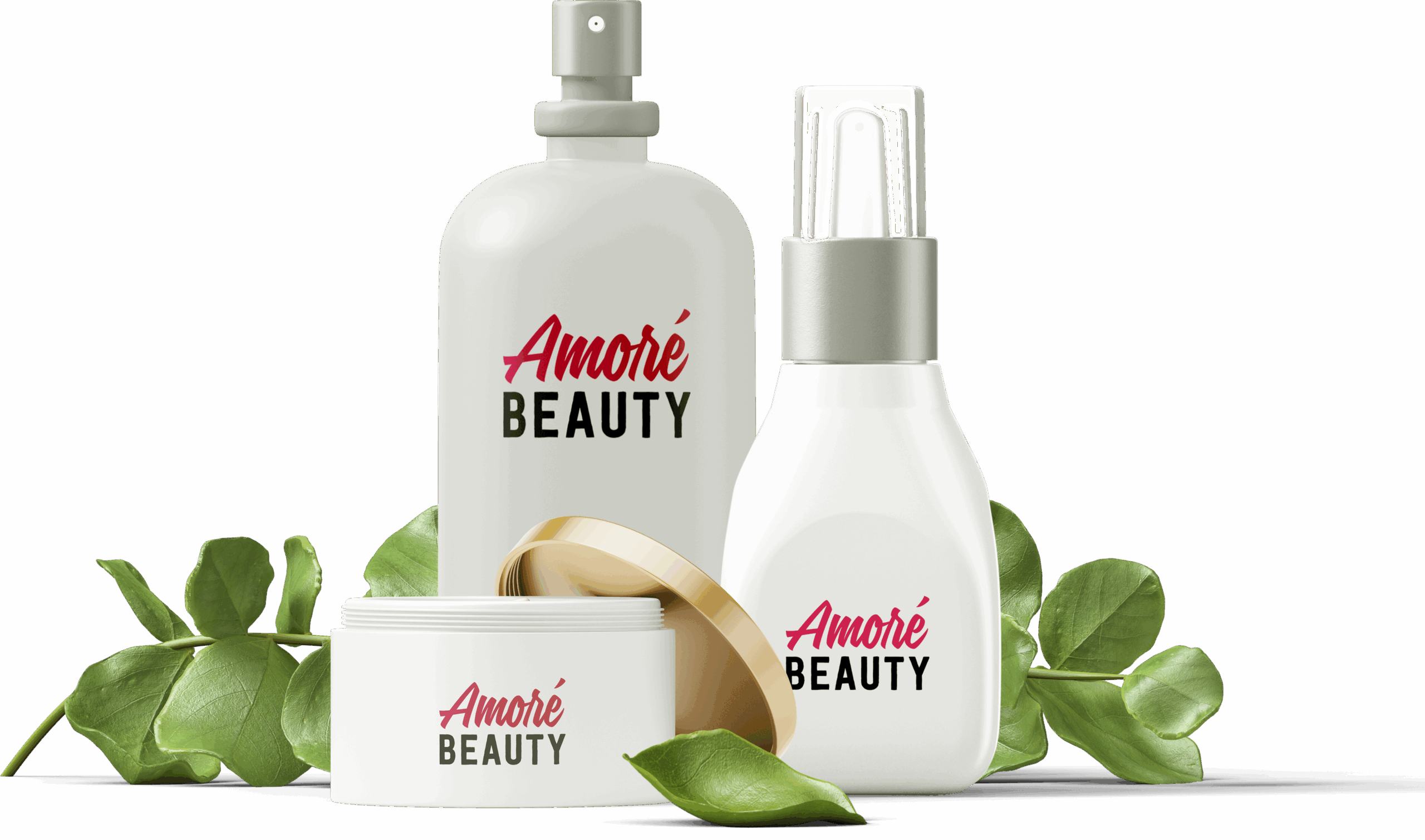Between branding, marketing, and brand marketing, it can be really hard to understand what the heck you, as a small business owner, are supposed to be doing to grow your company.
These terms are often confused with one another, especially because they’re all connected. However, it’s important to understand the difference between branding, marketing, and brand marketing, so that you can ultimately use them together.
For instance, brand marketing is the intersection of branding and marketing. Its sole purpose is to grow brand equity, or the value of a brand.
We’ll go into more depth about this below, in addition to covering how you can use brand marketing to grow your brand equity.
But first, let’s get some important definitions out of the way:
What is a Brand?
We’re glad you asked!
Contrary to what you might think, a brand is the public perception surrounding a person, product or business. In other words, your brand is how others see you.
However, you can (and should) play an active role in shaping that perception, by creating a brand identity.
Your identity is the complete picture your business (or you, if you’re working on your personal brand) shows to the world. This includes your logo, brand imagery, color palette, brand voice, personality, and messaging strategy.
It used to be that branding was just about slapping a logo and name onto a company. Now, however, it’s become much more than that.
Today, a successful brand requires a crafted personality, one that speaks to a specific audience and is consistent wherever the brand is present. Ideally, this personality is expressed through your logo and brand colors, but it also needs to carry through to the way you communicate with your audience.
What is Marketing?
Marketing generally refers to the act of trying to promote a product or service. It encompasses a lot of sub-categories depending on what your marketing goals are, such as:
- – Content Marketing
- – SEM and SEO
- – PPC (pay-per-click)
- – Email marketing
- – Print campaigns
- – Radio and TV advertising
- – Mobile marketing
- – Social media marketing
– and the list goes on…..
There are a million ways to go about promoting yourself, both online and offline.
What’s important to understand is that standard marketing is generally geared toward generating a direct response – i.e. getting your audience to immediately take an action (such as subscribe or purchase). However, that’s not the case with brand marketing.
What is Brand Marketing?
Like we mentioned above, brand marketing refers to a type of marketing whose goal is to increase public awareness of your brand, with a focus on building long-lasting relationships with your target audience.
Unlike “regular” marketing, this type of marketing doesn’t look at sales as its holy grail. Instead, every brand marketing campaign is created as a response to the question: “What will help foster an ongoing relationship between my target audience and my brand?”
If done correctly, brand marketing will help to grow your brand equity over time.
What does that look like?
Well, think of how Kleenex has become the go-to brand for tissues, the same way that Tylenol is the stand-in word for painkiller. “Apple” has become synonymous with innovative technology, and Coke is the default feel-good soda.

The same applies to public figures who have grown their personal brands. Bill Gates is constantly referenced as a source of both wealth and innovation; Oprah (no last name needed) is the world’s icon of inspiration and self-help.
This isn’t to say that brand marketing doesn’t affect sales. On the contrary, good brand marketing will give your conversions a lift, and vice versa; your sales will be lower if your audience isn’t connected to your brand.
Notice that brand marketing, by definition, assumes you alreadyhave a brand. You need to have a solid brand in place before you start marketing it. In other words, branding comes first, and brand marketing follows.
Now that we have those definitions out of the way, let’s explore more about how to create a brand marketing strategy that works for your business or personal brand.
How to Build a Strong Brand Marketing Strategy
Brand marketing should be part of your overall brand strategy. It encompasses the actions you take to actually implement your strategy in a way that successfully conveys your brand message to the world.
Let’s recap the first few steps that go into building your brand strategy, in addition to how you can turn that strategy into successful brand marketing.

1. Know your vision
At the heart of your brand is your vision for your company. In order to effectively market yourself as a business owner, you need to know what that is first.
For example, Bill Gates’s vision for Microsoft was to put “a computer on every desk and in every home.” (See how well that turned out?) At the time of its founding, the company didn’t even make computers, yet it’s always been the vision that’s guided the company to success.
Think of the values that lie behind your brand and the vision that you have going forward. What is it that you want your brand to be? Do you want to make your customers laugh? Are you trying to make communities healthier by providing wholesome food? What about helping people connect (like Facebook)?
Once you pin down what your vision is, you’ll be better able to communicate that vision to your audience.
2. Narrow in on your target audience
In order to form connections with your audience, you need to know who that audience is – mainly because you’re going to tailor your messages to speak specifically to them.
Imagine who your ideal customer is by asking yourself these questions:
– Who would most benefit from my product/service/advice?
– What do they do in their spare time?
– What problems do my customers have?
– How old (age range) is my ideal customer?
– Where do my customers work? What do they do for fun?
Answering these questions should help you get an idea of who you’re aiming to communicate with in your brand marketing efforts.
However, sometimes the people we think will benefit from our products are actually not our target audience at all. So, the next thing you need to do is research; if you already have customers or users, then it’s time to poll them and find out who they are, by asking them questions similar to the ones outlined above.
Or, if you’re just starting from scratch, start by surveying people in your life to see who would be interested in your products or services. Research your competitors and try to gauge who their target audience is (and how your competitors interact with them).
Once you have your target audience pinned down, it’s time to establish your brand.
3. Establish your brand identity
Now that you know your brand vision and target audience, it’s time to come up with a visual identity that best expresses your vision.
Over time, your audience will see visual expressions of your brand and associate them with the personality traits you are communicating through your brand marketing efforts.
So, as you create your brand identity, it’s important that you have your vision and target audience in mind; your brand identity will only be effective so long as your audience connects to it.
Do some research into color psychology (the subconscious messages that different colors give off) and what different color combinations mean when they’re paired together. This will help you determine which colors are best for you to effectively convey your brand message.

Once you have that down, it’s time to create your:
– Logo – Either icon-based or text-based, your logo will be your audience’s primary reminder of who you are. Once you design a logo, it should appear everywhere your brand does in order for your audience to associate it with your brand over time.
– Brand personality – Describe your brand as if it were a person. Are you funny and quick? Light-hearted and altruistic? Friendly and down-to-earth? Your personality will help to inform your brand voice – i.e. the way that you speak to your audience across all of your communications – so it’s important to have a clear idea of what kind of tone you want to create.
– Typography – Which fonts will you use to tell your brand story? Go with a typeface that complements your logo and has the same general vibe. But, make sure to choose a font that’s readable and can easily be resized.
– Brand imagery – Determine which images are “acceptable” for your brand to use across communications, including appropriate colors and subject matter (smiling people, views of nature, family-friendly images, etc.).
– Brand guidelines – Write out the rules of your brand identity. Include all of the above information, detailing acceptable uses of your logo and images, how (and in which voice) you will communicate with your audience, and of course, the exact colors and fonts your brand will use.
4. Outline a messaging strategy
Although we’ve been talking about your “brand prep” until now, the bulk of your brand marketing lies in your messaging to your audience.
When creating your messaging strategy, it’s important to put your customers at the center of the story.
While it’s true that you’re trying to build your brand equity, the best way to do that is not through hitting your customers over the head with how good your brand is. Instead, you want to show them how great you are – by prioritizing them and conveying them you care.
One way to do this is by focusing on positive sentiment. Good brand marketing is centered around creating positive emotional relationships with your customers. As such, your messages should have a positive intention, whether to make your audience laugh or educate them in some way.
Think about which images you’re going to use, what content you’re going to create, and how to bridge the gap between you and them. Make your audience feel like they’re a part of your brand rather than outsiders looking in.
You also have to decide how and when you’re going to communicate with your target audience. Between social media, emails and ads, there are a million ways you can reach your customers.
Apple’s “Get a Mac” campaign is a brilliant example of creative brand marketing messaging. Through a series of funny, poignant videos, they showed how PC is no match for Mac computers.
You can watch some of the highlights of the campaign here:
Decide how and when you’re going to communicate with your customers, and don’t be afraid to get creative.
Just remember that your brand marketing messaging should focus on showing why your brand is valuable and worthy of connecting with your audience, rather than trying to get your audience to do something (like purchase).
5. Be consistent
The thing that makes brand marketing so effective is consistency.
A campaign here and there isn’t going to cut it for the long term; you need to constantly work on building a relationship with your audience, so that your brand colors, logo and brand voice become recognizable over time.
This is easier said than done. However, being consistent in your communication is at the heart of building brand recognition.
Start with your online presence. Make sure that the look and feel of your website matches that of your social media pages, and that your posts are all aligned with your brand language. Create blog posts with the same tone of voice as your emails to your customers. Try to link back to your website wherever your brand appears online.
Also, figure out how much time you can actually devote to brand marketing campaigns, and then create a schedule for executing them.
For example, if you’re using email to market your brand, try to have an email go out every other week with updates about your company, curated content that can help your audience interact with your product better, or whatever else you think your audience will find valuable.
And, create a social media content calendar, so that you can maintain an active presence on whichever social channels you use. This doesn’t mean you need to post every day, but aim for a set number of times per week, so that your audience can come to recognize your brand and rely on you for fresh content.
6. Make sure your product delivers on your promise
No matter how good your brand marketing strategy is, you’re going to have difficulty creating brand equity around your products or services if they miss the mark. Low product quality will negatively impact your brand equity, and it will ultimately damage your brand’s reputation.
So, make sure to deliver what you promise your audience, whether that means ensuring your products are bug-free or escalating your customer service efforts.
And, if you are having trouble with something you offer, be honest about it. Send an email to your audience about the difficulty and let them know that you’re doing everything you can to fix the situation. (It won’t hurt to throw a discount into the mix.)
People appreciate authenticity from brands more than anything else, and they’re more likely to stick with you through the ride if you’re transparent about your hardships. On the flip side, selling a cake with too much salt or a course that doesn’t download properly without alerting your audience will have a negative long-term impact on your brand.
Over to You
Now that you have a handle on what brand marketing is, it’s time to put your plan into action. Make sure that your customers should always be at the center of your communications, from the way you handle customer service to the stories you tell on social media.
Ready to start marketing your brand? Head over to Tailor Brands and start designing social media posts that speak to your audience!
